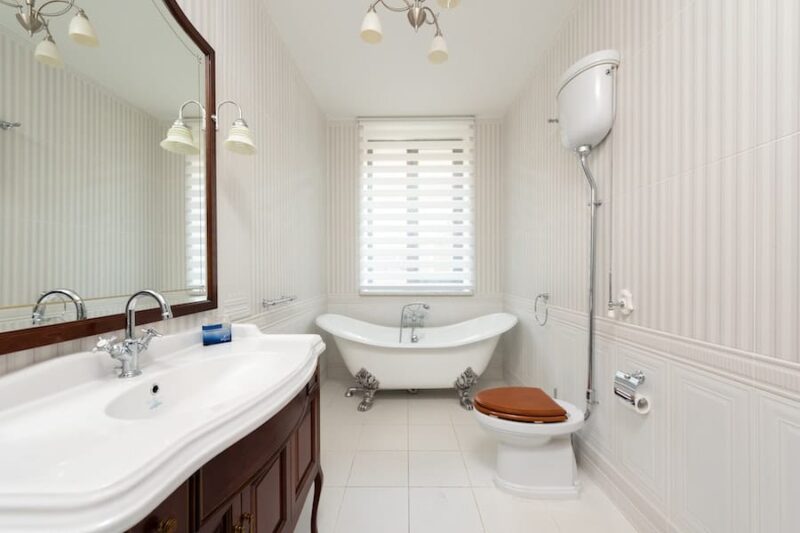Dealing with a clogged toilet can be a frustrating and unpleasant experience. When faced with this common household problem, many people wonder if they can use Drano, a popular drain-cleaning product, to tackle the issue. In this article, we will delve into the question: “Can you use Drano in a toilet?” We will explore the effectiveness of Drano, the potential risks associated with using it in toilets, and alternative solutions for unclogging toilets. By the end, you’ll have a clearer understanding of how to handle a clogged toilet efficiently and safely.
Can You Use Drano In A Toilet?
Yes, Drano can be used in a toilet, but it is not the most effective or recommended solution. The chemicals in Drano may not effectively dissolve the clog, and they can potentially damage the toilet’s plumbing or septic system. It is generally advisable to explore alternative methods such as using a plunger, natural remedies, or seeking professional help.
Understanding Drano
Drano is a popular brand of chemical drain cleaner widely used for unclogging pipes and drains. It is specifically formulated to dissolve common household clogs caused by hair, grease, soap scum, and other organic matter. The primary active ingredients in Drano typically include sodium hydroxide (lye) or potassium hydroxide, along with other additives that enhance its cleaning power.
The main purpose of Drano is to break down and dissolve the clogs obstructing the flow of water in drains. When Drano comes into contact with water, it generates heat and a chemical reaction that helps dissolve the blockage. The solution works by converting grease, hair, and other substances into a soapy substance that can be easily washed away.
Drano is primarily designed for use on various surfaces like sinks, showers, and bathtubs, where it can come in direct contact with the clog. However, using Drano in a toilet is a different scenario altogether. The toilet bowl contains water, and the clog may be located further down the pipes, making it more challenging for the chemicals to reach and effectively dissolve the obstruction.
It’s important to note that while Drano can potentially be used in a toilet, it is generally not the most effective or recommended solution. The specific design of toilets, with curved pipes and tramways, makes them less suitable for the effective action of drain cleaners. Moreover, the chemicals in Drano can cause harm to the toilet’s plumbing system, including pipes and seals, and may even lead to more severe damage if not used correctly.
Factors To Consider Before Using Drano In A Toilet
The severity of the clog: Evaluate the severity of the toilet clog. Drano may be less effective on stubborn or severe clogs that require more aggressive measures to be resolved.
- Type of toilet: Consider the type of toilet you have. Some toilets have specific materials, such as porcelain or sensitive components, which can be adversely affected by the harsh chemicals in Drano.
- Plumbing system condition: Assess the overall condition of your plumbing system. Older or deteriorating pipes may be more vulnerable to damage from the chemicals in Drano, increasing the risk of leaks or other plumbing issues.
- Previous attempts: Take into account any previous attempts to unclog the toilet. If you have already used a plunger or other methods without success, it may be an indication that the clog requires a different approach than using Drano.
- Safety precautions: Ensure that you can adhere to the safety precautions recommended by Drano. This includes wearing protective gloves and eyewear, providing adequate ventilation, and keeping the product out of reach of children and pets.
- Alternative solutions: Explore alternative solutions before resorting to Drano. Plunging, natural remedies, or seeking professional help are often safer and more effective options for unclogging a toilet.
How Drano Works To Break Down Clogs?
Drano works by utilizing its active ingredients, such as sodium hydroxide (lye) or potassium hydroxide, to break down clogs in drains and pipes. Here’s a step-by-step explanation of how Drano works to dissolve clogs:
- Contact with water: When Drano comes into contact with water, it activates and begins the chemical reaction process.
- Heat generation: As the reaction begins, Drano generates heat. This heat helps to soften and dissolve the clogged material.
- Chemical reaction: The active ingredients in Drano, typically sodium hydroxide or potassium hydroxide, undergo a chemical reaction with the clog. These chemicals are highly alkaline and work to break down organic materials, such as hair, grease, and soap scum.
- Dissolving the clog: The alkaline properties of Drano work to convert the clog into a soapy substance. This transformation makes it easier for the clog to be washed away when water flows through the drain.
- Drainage: Once the clog has been sufficiently broken down by Drano, the debris is washed away as water flows through the drain, restoring normal water flow.
Preventive Measures For Avoiding Toilet Clogs
Taking proactive steps to prevent toilet clogs can save you from the inconvenience and frustration of dealing with a clogged toilet. Here are some preventive measures you can implement:
- Mindful flushing: Only flush down toilet paper and human waste. Avoid flushing down items like wet wipes, feminine hygiene products, cotton balls, dental floss, or paper towels, as these can easily cause clogs.
- Use toilet paper responsibly: Use a moderate amount of toilet paper and avoid excessive use or flushing large wads at once. If needed, flush multiple times instead of overwhelming the toilet with too much paper.
- Educate household members: Teach everyone in your household about proper toilet usage and the importance of not flushing inappropriate items. Children, in particular, should be educated on what can and cannot be flushed down the toilet.
- Install a toilet paper holder: Use a toilet paper holder that limits the amount of paper dispensed at once. This can help prevent excessive toilet paper usage and potential clogs.
- Regular maintenance and cleaning: Implement regular cleaning and maintenance of your toilet. This includes periodic cleaning of the bowl and regular inspections for any signs of buildup or potential clogs. Promptly address any minor issues to prevent them from escalating into major clogs.
- Water pressure and flow: Ensure that your toilet has adequate water pressure and flow. Low water pressure can contribute to incomplete flushing and potential clogs. If you notice low water pressure, consult a plumber to address the underlying issue.
- Plunger usage: Keep a plunger handy near your toilet. In case of minor clogs, using a plunger immediately can help dislodge the obstruction before it becomes a full-blown clog.
- Regular professional inspections: Consider scheduling periodic inspections by a professional plumber to assess the condition of your plumbing system. They can identify any potential issues, such as tree root intrusion or pipe deterioration, and address them proactively.
Conclusion
In conclusion, when faced with a clogged toilet, it is important to consider the effectiveness, potential risks, and alternative solutions before using Drano. While Drano can be used in a toilet, it may not be the most suitable option and can pose risks to plumbing systems. Exploring alternative methods, practicing preventive measures, and seeking professional help when needed will ensure efficient and safe resolution of toilet clogs.
FAQ’s
Is It Safe To Use Drano In A Toilet?
Using Drano in a toilet is generally not recommended as it can potentially damage the toilet’s plumbing or septic system. The chemicals in Drano may not effectively dissolve the clog, and they can emit harmful fumes. It is advisable to explore alternative methods like plunging or using natural remedies.
Can Drano Unclog All Types Of Toilet Clogs?
Drano may be effective for some minor toilet clogs caused by organic matter, such as hair or soap scum. However, for more stubborn or severe clogs, especially those caused by non-organic materials like foreign objects or mineral deposits, Drano may not be effective and alternative solutions should be considered.
What Are The Risks Of Using Drano In A Toilet?
Using Drano in a toilet can potentially damage the plumbing system, including pipes and seals. The harsh chemicals in Drano can also be harmful to septic systems and the environment. Additionally, the fumes generated by Drano can be dangerous if proper safety precautions are not followed.
Are There Alternative Methods To Unclog A Toilet?
Yes, there are several alternative methods to unclog a toilet. These include using a plunger, using a toilet auger or plumber’s snake, or using natural remedies like a mixture of baking soda and vinegar or hot water and dish soap. Each method has its own effectiveness and may be more suitable depending on the type and severity of the clog.
How Can Toilet Clogs Be Prevented?
To prevent toilet clogs, it is important to flush only toilet paper and human waste down the toilet, avoiding the disposal of items like wet wipes or paper towels. Educating household members about proper toilet usage, regular maintenance and cleaning, and monitoring water pressure and flow can also help in preventing toilet clogs.










